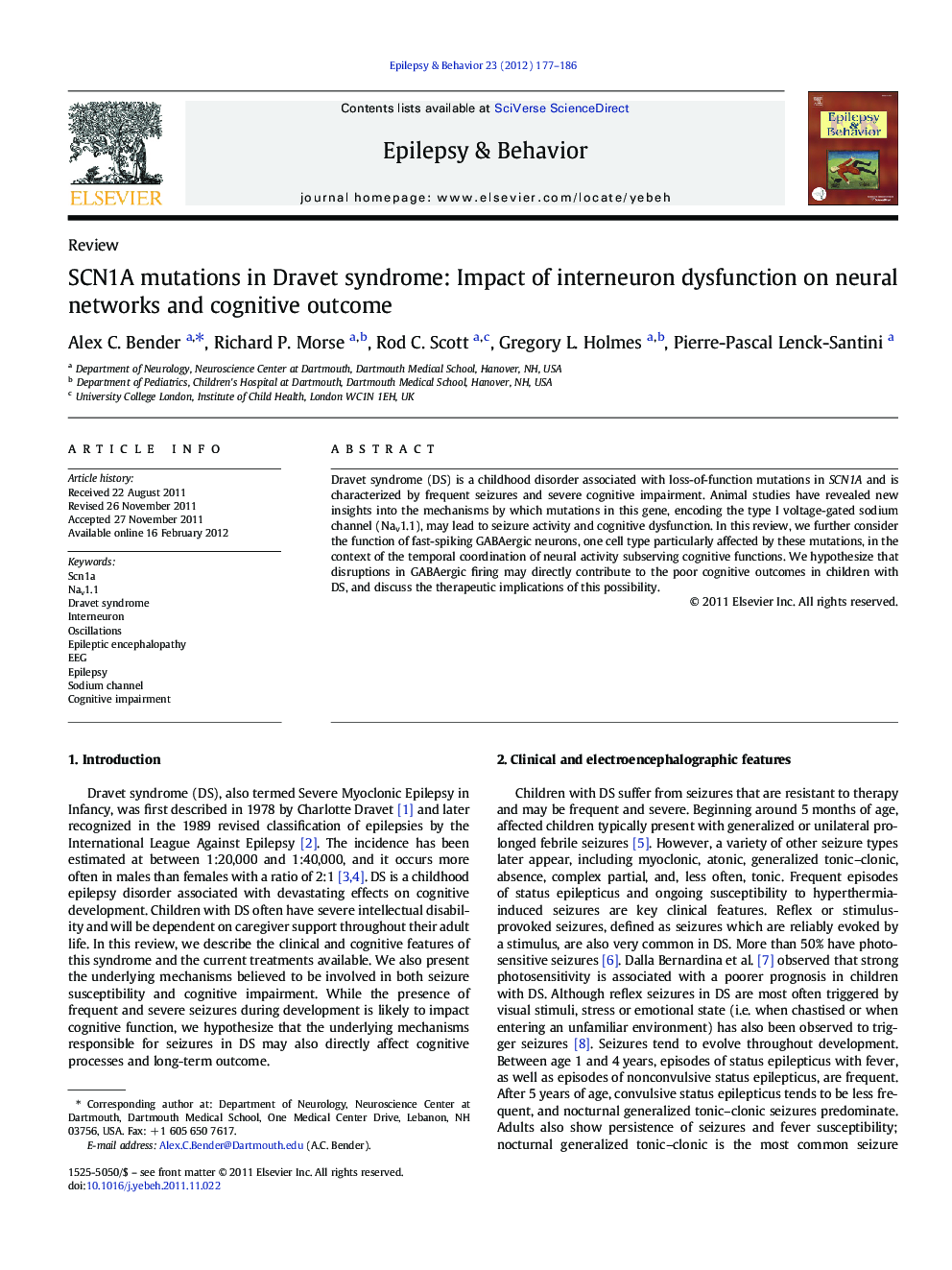| Article ID | Journal | Published Year | Pages | File Type |
|---|---|---|---|---|
| 6014527 | Epilepsy & Behavior | 2012 | 10 Pages |
Dravet syndrome (DS) is a childhood disorder associated with loss-of-function mutations in SCN1A and is characterized by frequent seizures and severe cognitive impairment. Animal studies have revealed new insights into the mechanisms by which mutations in this gene, encoding the type I voltage-gated sodium channel (Nav1.1), may lead to seizure activity and cognitive dysfunction. In this review, we further consider the function of fast-spiking GABAergic neurons, one cell type particularly affected by these mutations, in the context of the temporal coordination of neural activity subserving cognitive functions. We hypothesize that disruptions in GABAergic firing may directly contribute to the poor cognitive outcomes in children with DS, and discuss the therapeutic implications of this possibility.
⺠Dravet syndrome is a childhood disorder associated with mutations in SCN1A. ⺠It is characterized by frequent seizures and severe cognitive impairment. ⺠We propose that dysfunction in GABAergic neurons leads to altered brain oscillations. ⺠Both seizures and altered oscillations may contribute to cognitive impairment.
